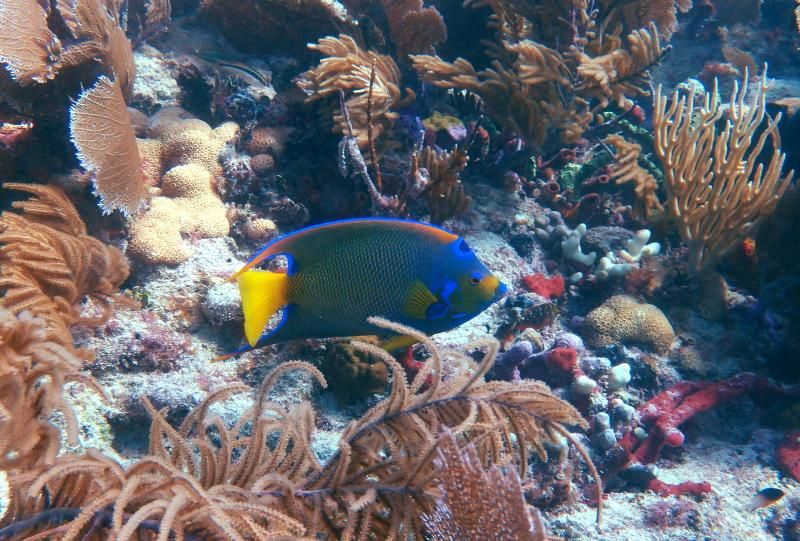
I'm physically and mentally exhausted after five wonderful days snorkeling and marine biologizing at the Florida Institute of Oceanography's Keys Marine Lab. This was a required field trip for one of the FGCU classes I'm teaching this semester; Marine Ecology. Our class was quite large this year (31 students) so we broke the trip into two groups of 15 or 16 each, and each group spent two nights at KML.
When I did this trip in 2012 I didn't incorporate much lesson structure- We just put the students in the boat and took them out snorkeling. In 2013 I wanted to add a stronger scientific component so we did a "living laboratory" benthic habitat survey using a variety of transect and quadrat methods. Doing challenging species identification and complex in-water data recording at the same time was overwhelming for the students that year, so this year I tried a compromise between the unscientific snorkeling we did in 2012 and the overly ambitious benthic surveys we did in 2013.
We focused on building species identification skills and comparing species composition and abundance from site to site. Each student would make observations and take pictures at every site we visited in the field, then would come back to the lab and use field guides to help identify and write down every species they were sure they had encountered. Species included everything from fishes to corals, sponges, other invertebrates, algae, seagrasses, and mangroves. At the end of the last day I put pictures of 90 of the species we had encountered into a big powerpoint slideshow as a number-coded species identification quiz. To make the quiz less impossible I let students use field guides during the quiz. From my perspective it worked great, but we'll see what the students thought when they do their course evaluations.
The snorkeling sites that the KML staff took us to this year were a bit different from ones I've visited in the past, because the weather was rainy and windy. When the weather was OK we went out some spots on the reef: Coffin's Patch Special Protected Area, Long Key Ledge, and Elbow Reef. We visited an inshore seagrass and sandbar site near Grassy Key, and we visted two mangrove-seagrass sites: Zane Gray Creek and Koch Key. During the worst weather we just snorkeled from shore in the bay near KML. There was some overlap in the species we saw at each site, but there were unique critters everywhere we went. You can see a little of what we saw in the slideshow below.
My windsurfing followers will be happy to hear that I got some kick-butt sessions in front of my hotel before and after "work" during the trip. Friday night a big NE wind pushed out the low pressure system that had been hanging over us, and pumped my 4.5 sail with power for a wild ride over Florida Bay. Saturday morning the skies were clear and the wind was still strong enough for a powered 5.5 session before snorkeling. Woo hoo!

No comments:
Post a Comment